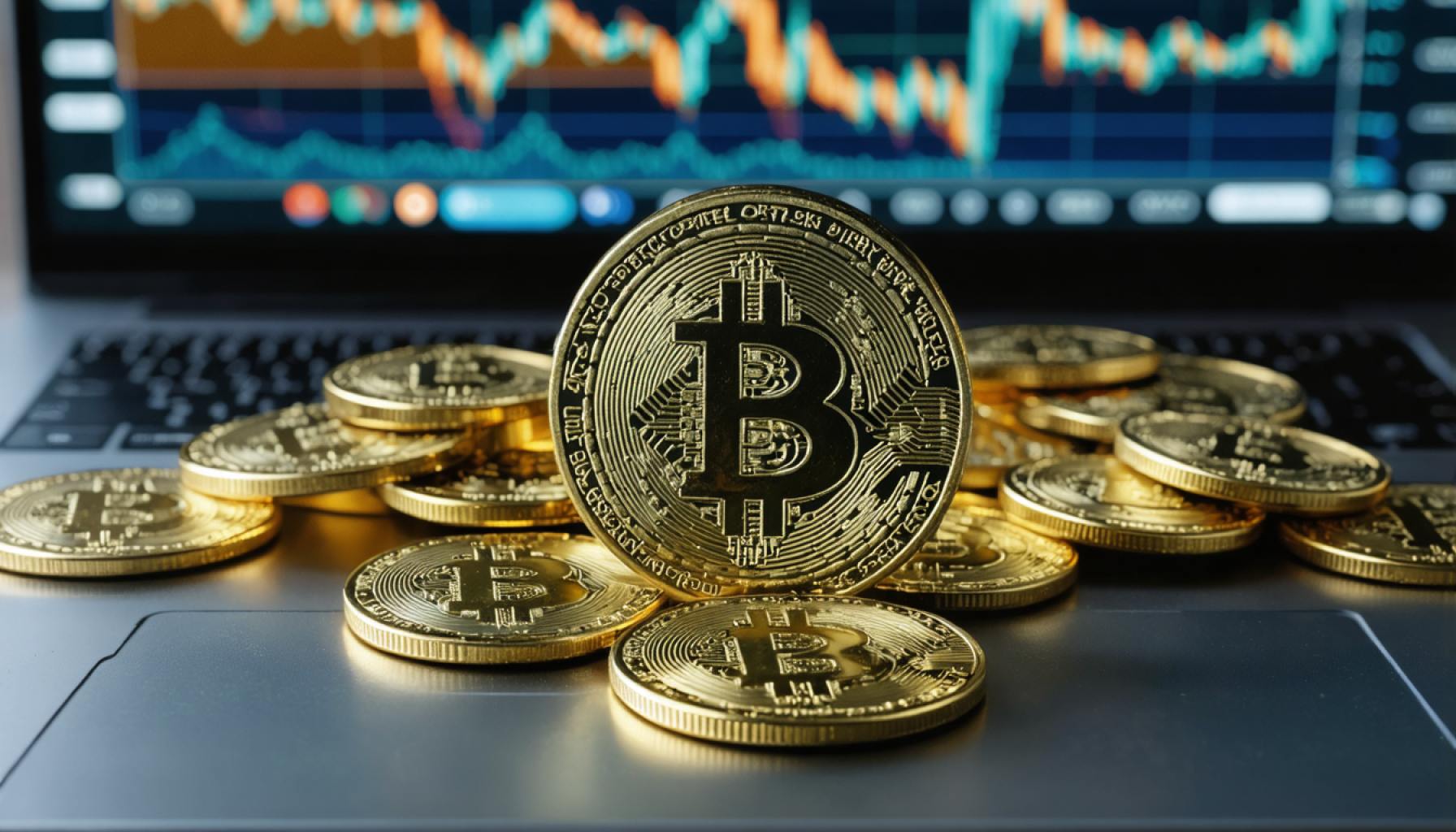- Bitcoin surged over 1.5% to $84,900, signaling a potential end to a three-month downtrend, amid dynamic market changes.
- The Trump administration’s new guidelines on reciprocal tariffs and exemptions have influenced global market trends.
- Key imports like smartphones and microchips are now exempt from significant tariffs, affecting over $60 billion worth of products.
- This tariff relief could alleviate inflationary pressures and spark hope for possible Federal Reserve interest rate cuts.
- Major cryptocurrencies such as Ethereum, Ripple, and Cardano experienced significant price increases, reflecting investor confidence.
- Despite positive crypto movements, the broader financial market remains cautious with eyes on traditional market responses.
- The situation underscores the critical role of strategic economic decisions in shaping financial market dynamics.
In a dramatic pivot from recent months, Bitcoin soared over 1.5% to reach a remarkable $84,900, signaling the potential end of a stubborn three-month downtrend. This momentum, captured in the weekend’s brisk trading sessions, follows a strategic move by the Trump administration that rewrote the script of the ongoing tariff saga. The United States’ decision to issue new guidelines on reciprocal tariffs and the subsequent exemptions unveiled by the U.S. Customs and Border Protection has created ripples across global markets.
The new exemptions, specifically covering vital imports such as smartphones, computers, and microchips, effectively shield these products from the crippling tariffs previously imposed under President Donald Trump’s 125% additional duty on Chinese imports, and his sweeping 10% baseline global levy. By alleviating pressure on some of the most significant technological imports—over $60 billion worth of smartphones alone—the U.S. appears to be softening its stance in an economic standoff that has reverberated throughout international trade.
This tariff relief not only undercuts the market’s inflationary pressures but also appears to offer a glimmer of hope that the Federal Reserve might contemplate interest rate cuts sooner than anticipated. As recession fears loomed, the bond market played a pivotal role, seemingly nudging the administration toward conciliation.
The optimism is not confined to Bitcoin. Major cryptocurrencies such as Ethereum (ETH), Ripple (XRP), and Cardano (ADA) saw a robust price increase of 6% in a single day, a gesture toward increased risk-taking and investor confidence sweeping the crypto sphere. The reassuring stability of top stablecoins, USDT and USDC, holding strong above $200 billion, further paints a picture of a market poised for a potential rally.
However, the broader financial landscape is cautious. Observers are keenly watching how this surge might translate once Wall Street resumes on Monday. With the crypto market leading the charge during its 24/7 operation, the question remains: Will traditional markets follow suit in this buoyant wave, defying the trend of economic skepticism?
The key takeaway from this unfolding narrative is the undeniable impact of strategic economic maneuvers on market dynamics. As we witness the cryptocurrency’s resilience and adaptability, the intersection of policy decisions and financial market reactions highlights an emerging reality—adaptability in the face of global economic chess games is more crucial than ever.
Bitcoin’s Meteoric Rise: What It Means for Global Markets and Your Investments
Understanding the Bitcoin Surge and Its Implications
Bitcoin’s recent surge to over $84,900 marks a significant shift in market trends, reversing a three-month downtrend. This rally was heightened by U.S. policy changes regarding tariffs on key tech imports—a development with far-reaching implications for investors and the global economy.
The Policy Shift: Tariffs and Their Impact
The U.S. reversed some of its stringent tariffs that affected $60 billion worth of essential technology imports, including smartphones, computers, and microchips. These tariffs were initially part of President Trump’s economic strategy, imposing a 125% and 10% levy on Chinese and global imports, respectively. By relaxing these tariffs, the U.S. administration has alleviated inflationary pressures, impacting both the technology sector and consumer prices positively.
How-To: Invest Smartly in the Crypto Space
1. Research Thoroughly: Before diving into cryptocurrency investments, study market trends, historical data, and expert analyses.
2. Diversify Your Portfolio: Spread investments across various cryptocurrencies like Bitcoin, Ethereum, and Cardano to mitigate risks.
3. Stay Updated on Economic Policies: Be aware of policy changes, as they can dramatically affect crypto prices.
4. Use Trusted Platforms: Ensure you trade on reputable crypto exchanges for security and reliable information.
Real-World Use Cases and Industry Trends
With tariffs eased, technology companies may see cost reductions, potentially leading to lower consumer prices and increased profitability. For cryptocurrencies:
– Adoption in E-commerce: Lower tech costs might encourage more crypto payment solutions in e-commerce.
– Decentralized Finance (DeFi): The adaptability seen in Bitcoin could stimulate further DeFi innovations and investments.
– Cross-border transactions: Reduced tariffs facilitate trade, and cryptocurrencies can leverage this for efficient global transactions.
Market Forecast and Cryptocurrency Predictions
Experts predict continued volatility in the crypto market but remain optimistic about a bullish trend if global economic conditions stabilize. According to industry experts, Bitcoin could reach unprecedented heights if current economic policies persist, further integrated with mainstream financial systems.
Security and Sustainability
– Security: With large sums of capital flowing into cryptocurrencies, ensuring robust security measures on exchanges is critical.
– Sustainability: Rising electricity consumption for mining operations remains a concern; thus, support sustainable practices and greener coins like Cardano (ADA) that use Proof-of-Stake (PoS) protocols.
Pros and Cons Overview
Pros:
– Potential for high returns on investment.
– Enhancements in technology-driven sectors.
– Easier cross-border transactions.
Cons:
– High volatility and market unpredictability.
– Regulatory uncertainties.
– Energy and environmental concerns related to mining operations.
Conclusion: Actionable Strategies for Investors
To capitalize on this crypto resurgence:
– Regularly review and adjust your investment portfolio.
– Stay informed about geopolitical and economic developments.
– Consider consulting financial advisors for diversified strategies.
For further insights into cryptocurrency trends and market analyses, visit the CoinMarketCap website for up-to-date market data and expert opinions.
